Computers are fundamental tools in modern society, used for various tasks ranging from simple calculations to complex simulations. This basic introduction provides an overview of what computers are, their components, functions, and significance in everyday life.
Definition: A computer is an electronic device capable of processing data, performing calculations, executing instructions, and storing information. It operates under the control of software programs, which provide instructions for performing specific tasks.
Characteristics of Computers Computers possess several key characteristics that define their capabilities, functions, and role in modern society. Understanding these characteristics is essential for comprehending the significance and potential of computing technology. Here’s a detailed exploration of the primary characteristics of computers:
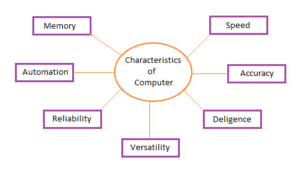
1. Speed: Computers can perform operations and process data at incredible speeds, measured in terms of instructions executed per second (IPS) or clock cycles per second (Hertz). The speed of modern computers allows them to execute complex tasks rapidly, making them invaluable tools for various applications, including scientific simulations, data analysis, and real-time processing.
2. Accuracy: Computers operate with a high level of accuracy, executing instructions and calculations precisely according to programmed algorithms. Unlike humans, computers do not make errors due to fatigue, emotions, or distractions. However, errors can occur due to hardware faults, software bugs, or incorrect input data.
3. Versatility: Computers are versatile machines capable of performing a wide range of tasks across different domains. From basic arithmetic calculations to complex scientific simulations, computers can be programmed to execute diverse operations and adapt to various applications. This versatility makes computers indispensable tools in fields such as business, education, healthcare, entertainment, and research.
4. Automation: Computers excel at automating repetitive tasks and streamlining processes through programmed instructions and algorithms. Automation reduces the need for manual intervention, increases efficiency, and enables the rapid execution of tasks at scale. Automated systems powered by computers are commonly used in manufacturing, logistics, finance, and information technology.
5. Storage Capacity: Computers can store vast amounts of data in digital format, ranging from text, images, and audio to video, software applications, and databases. Storage technologies such as hard disk drives (HDDs), solid-state drives (SSDs), and cloud storage enable computers to store, retrieve, and manipulate massive volumes of data efficiently. The ability to access and manage large datasets is essential for data-driven decision-making, analysis, and research.
6. Scalability: Computers exhibit scalability, allowing them to be scaled up or down in terms of processing power, memory capacity, and storage capacity to meet changing demands. Scalability enables organizations to expand their computing resources as needed, whether to accommodate growing workloads, handle peak usage periods, or deploy new applications. Cloud computing platforms offer scalable infrastructure and services on-demand, enabling users to scale computing resources dynamically based on requirements.
7. Connectivity: Computers facilitate connectivity and communication through networking technologies, enabling users to exchange information, access resources, and collaborate across local and global networks. The internet, intranets, and extranets connect computers worldwide, facilitating communication, commerce, and collaboration. Networking capabilities allow computers to share data, printers, and other resources, enabling seamless integration and interaction in interconnected environments.
8. Reliability: Computers are designed to operate reliably under various conditions, with built-in mechanisms for error detection, fault tolerance, and recovery. Hardware redundancy, error-correcting memory, and backup systems help ensure the reliable operation of computers, even in the event of hardware failures or software errors. Reliability is crucial in mission-critical applications such as banking, healthcare, transportation, and emergency services.
A computer system is a combination of hardware, software, data, and users that work together to perform various computing tasks. It is an integrated and organized entity designed to process data and provide useful outputs. Here’s an overview of the components and functions of a computer system:
1. Hardware Components:
- Central Processing Unit (CPU): Often referred to as the “brain” of the computer, the CPU performs calculations, executes instructions, and coordinates the operation of other hardware components.
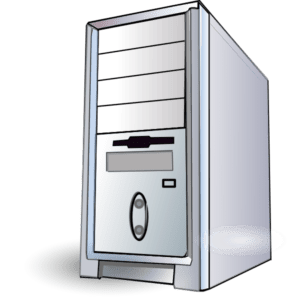
- Memory (RAM): Random Access Memory (RAM) temporarily stores data and program instructions that the CPU needs to access quickly while the computer is running.
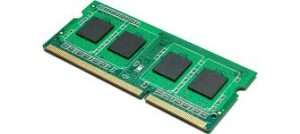
- Storage Devices: Hard Disk Drives (HDDs), Solid State Drives (SSDs), and other storage media provide long-term storage for data and programs.
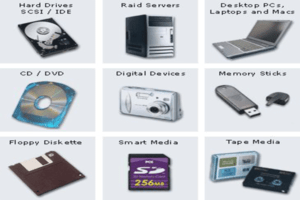
- Input Devices: Keyboards, mice, touchscreens, scanners, and other devices allow users to input data and commands into the computer system.
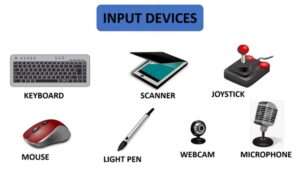
- Output Devices: Monitors, printers, speakers, and other devices display or output information from the computer to users.
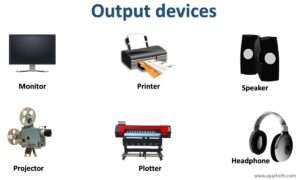
- Motherboard: The main circuit board that connects and provides power to the CPU, memory, storage devices, and other hardware components.
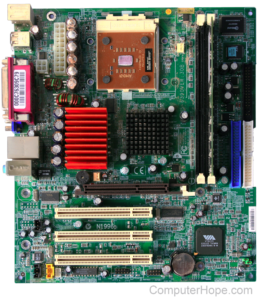
2. Software:
- Operating System (OS): The OS manages hardware resources, provides user interfaces, and facilitates communication between software and hardware components. Common examples include Windows, macOS, Linux, and Android.
- Applications: Software programs designed for specific tasks, such as word processing, web browsing, gaming, multimedia editing, and business applications.
3. Data:
- Data: Information in various forms, including text, numbers, images, audio, and video, that is processed and manipulated by the computer system.
- Database Systems: Software applications that store, organize, and manage large volumes of structured data for efficient retrieval and manipulation.
4. Users:
- End Users: Individuals who interact with the computer system to perform tasks, access information, and use applications.
- System Administrators: IT professionals responsible for managing and maintaining the computer system, including installing software, configuring hardware, and troubleshooting issues.
5. Functions of a Computer System:
- Input: Data and commands are entered into the computer system through input devices.
- Processing: The CPU processes data and instructions according to programmed algorithms, performing calculations, executing commands, and manipulating data.
- Storage: Data and programs are stored in memory (RAM) temporarily while being processed and in storage devices (HDDs, SSDs) for long-term storage.
- Output: Processed data and results are displayed or outputted to users through output devices.
- Communication: Computer systems can communicate and share data with other computer systems over networks, enabling collaboration, resource sharing, and information exchange.
Understanding the components, functions, and characteristics of a computer system is essential for effectively using and managing computing technology in various applications and environments. Whether for personal use, business operations, scientific research, or entertainment, computer systems play a crucial role in modern society.
The term “Generation of Computers” refers to the different phases or stages in the evolution of computer technology. Each generation is characterized by significant advancements in hardware, software, and computing capabilities. Here’s an overview of the five generations of computers:
1. First Generation (1940s – early 1950s):
- Vacuum Tubes: Computers of this generation used vacuum tube technology for processing and memory.
- ENIAC and UNIVAC: Examples of first-generation computers include ENIAC (Electronic Numerical Integrator and Computer) and UNIVAC (Universal Automatic Computer).
- Large and Bulky: First-generation computers were large, bulky machines that consumed a lot of electricity and generated a significant amount of heat.
- Limited Applications: They were primarily used for numerical calculations and scientific computations.
2. Second Generation (Early 1950s – early 1960s):
- Transistors: The development of transistors marked the second generation of computers, leading to smaller, faster, and more reliable machines.
- Mainframes and Minicomputers: Second-generation computers included mainframe computers and early minicomputers, which were smaller and more affordable than their predecessors.
- Magnetic Core Memory: Magnetic core memory replaced vacuum tubes as the primary form of computer memory.
- Batch Processing: Second-generation computers introduced batch processing, allowing multiple tasks to be executed sequentially without user intervention.
3. Third Generation (Early 1960s – early 1970s):
- Integrated Circuits: The invention of integrated circuits (ICs) revolutionized computing, leading to smaller, faster, and more powerful computers.
- Miniaturization: Third-generation computers were significantly smaller, more reliable, and more affordable than previous generations, making them accessible to businesses, universities, and government agencies.
- Operating Systems: The development of operating systems such as UNIX and DOS (Disk Operating System) facilitated more efficient management of computer resources and improved user interaction.
- Time-sharing Systems: Time-sharing systems allowed multiple users to interact with a single computer simultaneously, increasing efficiency and productivity.
4. Fourth Generation (Early 1970s – early 1990s):
- Microprocessors: The invention of microprocessors marked the fourth generation of computers, enabling the integration of entire central processing units (CPUs) onto a single chip.
- Personal Computers: Fourth-generation computers saw the emergence of personal computers (PCs), which became increasingly popular for business, education, and personal use.
- Graphical User Interface (GUI): The development of graphical user interfaces, such as Microsoft Windows and Apple Macintosh, made computers more user-friendly and accessible to non-technical users.
- Networking: Fourth-generation computers facilitated the growth of computer networking and the Internet, enabling global communication and collaboration.
5. Fifth Generation (Early 1990s – present):
- Artificial Intelligence (AI): The fifth generation of computers is characterized by advancements in artificial intelligence, machine learning, and natural language processing.
- Parallel Processing: Fifth-generation computers utilize parallel processing and distributed computing to perform complex computations more efficiently.
- Ubiquitous Computing: Computers have become ubiquitous in daily life, with smartphones, tablets, wearables, and other connected devices providing access to computing power and information anytime, anywhere.
- Cloud Computing: The advent of cloud computing has transformed the way computing resources are provisioned, accessed, and managed, enabling scalable and flexible solutions for businesses and individuals.
Each generation of computers has built upon the innovations and advancements of the previous generation, driving progress in computing technology and expanding the capabilities of computers to solve increasingly complex problems.
Types of Computers Computers come in various types, each designed for specific purposes, applications, and usage scenarios. Here’s an overview of the different types of computers:
1. Supercomputers:
- Purpose: Supercomputers are designed for processing massive amounts of data and performing complex calculations at incredibly high speeds.
- Architecture: They typically consist of thousands to millions of interconnected processing units (CPUs or GPUs) working in parallel.
- Applications: Supercomputers are used for scientific research, weather forecasting, climate modeling, nuclear simulations, cryptography, and complex computational tasks in fields such as astrophysics, genomics, and drug discovery.
- Examples: IBM Summit, Fugaku (formerly known as the K computer), Sierra.
2. Mainframe Computers:
- Purpose: Mainframes are large, powerful computers optimized for processing large volumes of data and supporting multiple users or applications concurrently.
- Architecture: They feature high-speed processors, large memory capacities, and extensive input/output (I/O) capabilities.
- Applications: Mainframes are used by large organizations for transaction processing, database management, financial transactions, airline reservations, banking, and other mission-critical tasks.
- Examples: IBM zSeries (z/OS), Fujitsu BS2000, Unisys ClearPath.
3. Minicomputers:
- Purpose: Minicomputers are mid-range computers that offer more computing power than personal computers but are smaller and less powerful than mainframes.
- Architecture: They typically feature multiple CPUs, moderate memory capacities, and support for multi-user environments.
- Applications: Minicomputers are used for scientific and engineering calculations, small-scale database management, manufacturing process control, network servers, and local area network (LAN) services.
- Examples: DEC PDP-11, VAX, HP 3000.
4. Personal Computers (PCs):
- Purpose: Personal computers are designed for individual use and are widely used for general-purpose computing tasks such as word processing, web browsing, email, multimedia, gaming, and productivity applications.
- Architecture: PCs come in various form factors, including desktops, laptops, tablets, and 2-in-1 devices, and typically feature microprocessors from Intel or AMD, along with standard components such as RAM, storage drives, and input/output ports.
- Operating Systems: They run operating systems such as Microsoft Windows, macOS, and Linux, and can be customized with a wide range of software applications and hardware peripherals.
- Examples: Desktop PCs (HP, Dell, Lenovo), Laptop PCs (Apple MacBook, Dell XPS, HP Spectre), Tablet PCs (Apple iPad, Microsoft Surface), 2-in-1 PCs (Microsoft Surface Pro, Lenovo Yoga).
5. Workstations:
- Purpose: Workstations are high-performance computers optimized for specialized tasks such as computer-aided design (CAD), graphic design, video editing, scientific visualization, and 3D rendering.
- Architecture: They feature powerful CPUs, high-end graphics cards (GPUs), large amounts of RAM, fast storage drives (SSDs), and specialized hardware for accelerated computing tasks.
- Applications: Workstations are used by professionals in fields such as architecture, engineering, animation, film production, game development, and scientific research.
- Examples: HP Z Workstation, Dell Precision, Apple Mac Pro.
6. Embedded Computers:
- Purpose: Embedded computers are specialized computers integrated into other devices or systems to control specific functions or processes.
- Architecture: They are typically built around microcontrollers, system-on-chip (SoC) devices, or custom-designed hardware, and are often optimized for low power consumption, small size, and real-time operation.
- Applications: Embedded computers are used in a wide range of applications, including consumer electronics (smartphones, TVs, home appliances), automotive systems (engine control units, infotainment systems), industrial automation (PLCs, robotics), medical devices, and IoT (Internet of Things) devices.
- Examples: Arduino, Raspberry Pi, Automotive ECUs, Industrial PLCs.
7. Servers:
- Purpose: Servers are computers designed to provide resources and services to other computers, devices, or users over a network.
- Types: Servers include web servers, file servers, email servers, database servers, application servers, cloud servers, and virtual servers (virtualized instances running on physical hardware).
- Architecture: Servers are optimized for reliability, scalability, and performance, with features such as redundant power supplies, RAID storage arrays, hot-swappable components, and server-grade hardware.
- Examples: Apache HTTP Server, Microsoft Exchange Server, MySQL Server, Amazon Web Services (AWS), Google Cloud Platform (GCP).
8. Mobile Devices:
- Purpose: Mobile devices are compact computing devices designed for portable and mobile use, offering features such as touchscreens, wireless connectivity, and mobile operating systems.
- Types: Mobile devices include smartphones, tablets, e-readers, and wearable devices (smartwatches, fitness trackers).
- Applications: Mobile devices are used for communication, web browsing, social media, entertainment, productivity, navigation, and health monitoring.
- Examples: Apple iPhone, Samsung Galaxy, iPad, Kindle, Apple Watch, Fitbit.
9. Quantum Computers:
- Purpose: Quantum computers are experimental computers that leverage the principles of quantum mechanics to perform calculations using quantum bits (qubits), which can exist in multiple states simultaneously.
- Architecture: Quantum computers use quantum processors, quantum gates, and quantum algorithms to perform computations, and require specialized environments with ultra-low temperatures and minimal interference.
- Applications: Quantum computers have the potential to revolutionize fields such as cryptography (breaking encryption algorithms), optimization (solving complex optimization problems), materials science (designing new materials), drug discovery (modeling molecular structures), and artificial intelligence (training quantum neural networks).
- Examples: IBM Q System One, Google Quantum Computer, D-Wave Quantum Annealer.
Computers consist of several hardware components that work together to perform various tasks. Here are the main parts of a computer system:
1. Central Processing Unit (CPU):
- The CPU consists of several key components, including:
- Arithmetic Logic Unit (ALU): Performs arithmetic and logical operations on data.
- Control Unit: Coordinates the execution of instructions, fetching them from memory, decoding, and executing them.
- Registers: Small, high-speed memory locations used to store data temporarily during processing.
- Cache Memory: High-speed memory that stores frequently accessed data and instructions, reducing access times.
- Modern CPUs feature multiple cores, allowing them to execute multiple tasks simultaneously (multi-threading).
- Clock speed, measured in GHz, determines how many instructions the CPU can execute per second.
2. Motherboard:
- The motherboard provides physical connections and interfaces between various components, including the CPU, memory, storage devices, and expansion cards.
- It contains slots for attaching peripheral devices and expansion cards, such as graphics cards, network cards, and sound cards.
- The chipset on the motherboard manages data flow between components and controls system settings.
3. Memory (RAM):
- RAM temporarily stores data and program instructions that the CPU needs to access quickly while the computer is running.
- It is volatile memory, meaning it loses its contents when the power is turned off.
- The amount of RAM affects the computer’s performance, with more RAM allowing for smoother multitasking and faster program execution.
4. Storage Devices:
- Hard Disk Drives (HDDs) store data magnetically on spinning disks.
- Solid State Drives (SSDs) use flash memory to store data, offering faster read/write speeds and better durability than HDDs.
- Other storage devices include optical drives (CD/DVD/Blu-ray), USB flash drives, and memory cards.
5. Power Supply Unit (PSU):
- The PSU converts AC power from the wall outlet into DC power suitable for the computer’s components.
- It provides power to the motherboard, CPU, storage devices, and other hardware components.
- PSU wattage determines the amount of power available to the system and should be chosen based on the components’ power requirements.
6. Input Devices:
- Keyboards, mice, touchpads, and other input devices allow users to enter data and commands into the computer.
- Specialized input devices include graphics tablets, joysticks, scanners, and microphones.
7. Output Devices:
- Monitors (or display screens) visually present information generated by the computer.
- Printers produce hard copies of documents and images.
- Speakers and headphones provide audio output for music, videos, and other multimedia content.
8. Graphics Processing Unit (GPU):
- The GPU is responsible for rendering images and graphics on the computer’s display.
- It accelerates graphics processing tasks, including 2D and 3D rendering, video playback, and image processing.
- GPUs may be integrated into the CPU (integrated graphics) or provided as discrete graphics cards.
9. Expansion Cards:
- Expansion cards add functionality to the computer by providing additional features or connectivity options.
- Common expansion cards include network interface cards (NICs), sound cards, Wi-Fi cards, and USB expansion cards.
10. Cooling System:
- The cooling system prevents overheating by dissipating heat generated by the CPU, GPU, and other components.
- It typically includes fans, heat sinks, thermal paste, and sometimes liquid cooling solutions.
- Proper airflow and cooling are essential for maintaining optimal performance and prolonging component lifespan.
11. Case (Chassis):
- The case houses and protects the internal components of the computer.
- It provides physical support, structural integrity, and space for mounting hardware components.
- Cases come in various sizes and form factors, ranging from small mini-ITX cases to large full-tower cases.
12. Peripheral Devices:
- Peripheral devices connect to the computer to provide additional functionality or input/output capabilities.
- Examples include external hard drives, USB flash drives, webcams, microphones, and game controllers.
13. Network Interface:
- The network interface enables the computer to connect to networks, such as Ethernet LANs or Wi-Fi networks.
- It may be integrated into the motherboard (onboard LAN) or provided by a separate network interface card (NIC).
Storage devices can be categorized based on their technology, form factor, and usage. Here’s an overview of storage categories and their types:
1. Primary Storage:
- Random Access Memory (RAM):
- RAM is volatile memory that temporarily holds data and program instructions that the CPU needs to access quickly while the computer is running.
- It is measured in gigabytes (GB) and has much faster read/write speeds compared to secondary storage devices.
- RAM modules come in various types, such as DDR4, DDR5, and LPDDR4X, with different speeds and power consumption levels.
- Cache Memory:
- Cache memory is a small, high-speed memory located on the CPU or near the CPU.
- It stores frequently accessed data and instructions to reduce access times and improve overall system performance.
- Levels of cache memory include L1, L2, and L3 caches, with each level having different sizes and speeds.
2. Secondary Storage:
- Hard Disk Drives (HDDs):
- HDDs store data magnetically on spinning disks (platters) coated with a magnetic material.
- They consist of read/write heads that access data on the spinning platters.
- HDDs are available in various form factors (3.5-inch, 2.5-inch) and capacities (from gigabytes to terabytes).
- Types of HDDs include SATA (Serial ATA) HDDs, SAS (Serial Attached SCSI) HDDs, and enterprise-grade HDDs.
- Solid State Drives (SSDs):
- SSDs use NAND flash memory to store data, offering faster read/write speeds, lower latency, and better durability compared to HDDs.
- They have no moving parts, making them more resistant to shock, vibration, and mechanical failure.
- SSDs are available in various form factors (2.5-inch, M.2, PCIe) and interfaces (SATA, NVMe).
- Types of SSDs include consumer SSDs, enterprise SSDs, and specialized SSDs optimized for specific applications.
- Hybrid Drives (SSHDs):
- SSHDs combine the features of HDDs and SSDs into a single device, featuring an integrated SSD cache with a traditional HDD.
- They provide a balance of high capacity and improved performance for frequently accessed data.
3. External Storage:
- External Hard Drives:
- External hard drives are portable storage devices that connect to a computer via USB, Thunderbolt, or eSATA connections.
- They offer additional storage capacity and can be easily transported between devices.
- External HDDs and SSDs are available, providing options for both high capacity and high-speed storage.
- USB Flash Drives:
- USB flash drives are small, portable storage devices that connect to a computer’s USB port.
- They are commonly used for data transfer, backup, and portable storage of files and documents.
- USB flash drives come in various capacities, from a few gigabytes to several terabytes.
- External SSDs:
- External SSDs are portable solid-state drives that offer high-speed storage and connectivity.
- They provide fast data transfer rates and are ideal for users who require high-performance storage on the go.
4. Removable Storage:
- Optical Discs:
- Optical discs use laser technology to read and write data on a disc surface, with common types including CDs, DVDs, and Blu-ray discs.
- They are used for media distribution, software installation, and archival storage of data and multimedia content.
- Optical discs have limited storage capacities compared to other storage media but offer long-term data retention.
- Memory Cards:
- Memory cards are small, removable storage devices commonly used in digital cameras, smartphones, and other portable devices.
- They come in various formats, such as SD (Secure Digital), microSD, CompactFlash, and Memory Stick, with different capacities and speeds.
- Memory cards are used to store photos, videos, music, and other files, offering portable and expandable storage options.
- Tape Drives:
- Tape drives use magnetic tape cartridges to store data sequentially, offering high capacities and long-term data retention.
- They are commonly used for archival and backup purposes in enterprise environments, offering low cost per gigabyte and offline storage options.
5. Cloud Storage:
- Public Cloud Storage:
- Public cloud storage services are provided by third-party vendors over the internet, offering scalable, on-demand storage solutions.
- Users can store and access data from any internet-connected device, with options for data redundancy, encryption, and collaboration.
- Examples of public cloud storage providers include Amazon S3, Google Cloud Storage, Microsoft Azure, and Dropbox.
- Private Cloud Storage:
- Private cloud storage involves deploying and managing cloud storage infrastructure within an organization’s own data center.
- It offers enhanced security, control, and customization options compared to public cloud storage solutions.
- Private cloud storage solutions can be implemented using dedicated hardware, virtualization technologies, or cloud management platforms.
- Hybrid Cloud Storage:
- Hybrid cloud storage combines public and private cloud storage solutions, allowing organizations to leverage the benefits of both environments.
- It enables seamless data migration, workload scalability, and resource optimization across public and private cloud infrastructures.
- Hybrid cloud storage solutions offer flexibility, cost-effectiveness, and the ability to meet specific data governance and compliance requirements.
6. Network-Attached Storage (NAS):
- NAS Devices:
- NAS devices are specialized storage devices connected to a network, providing file storage and sharing capabilities to multiple users and devices.
- They offer centralized storage management, data backup, remote access, and multimedia streaming features.
- NAS devices are commonly used in homes, small businesses, and enterprise environments for data storage and collaboration.
7. Enterprise Storage:
- Storage Area Networks (SANs):
- SANs are high-speed, dedicated networks that connect servers and storage devices, allowing for centralized storage management and scalability.
- They provide block-level storage access and features such as storage virtualization, data replication, and disaster recovery.
- SANs are commonly used in enterprise data centers and large-scale storage environments for mission-critical applications and workloads.
- Enterprise Storage Arrays:
- Enterprise storage arrays are high-performance storage systems designed for demanding workloads in enterprise data centers.
- They offer features such as high availability, data redundancy, data deduplication, and advanced data management capabilities.
- Enterprise storage arrays can scale to petabytes of storage capacity and are optimized for performance, reliability, and scalability.
8. Tape Storage:
- Magnetic Tape Drives:
- Tape drives use magnetic tape cartridges to store data sequentially, offering high capacities, low cost per gigabyte, and long-term data retention.
- They are commonly used for archival and backup purposes in enterprise environments, offering offline storage options and data security.
- Tape storage solutions include tape libraries, autoloaders, and tape drives from vendors such as IBM, HPE, and Dell EMC.
Each type of storage offers distinct features, benefits, and use cases, catering to different requirements for performance, capacity, durability, and accessibility. The choice of storage technology depends on factors such as data storage needs, budget considerations, performance requirements, and scalability requirements. Many users and organizations adopt a combination of storage types to create a comprehensive and flexible storage infrastructure that meets their specific needs. Computer software and hardware are the two essential components of a computer system, working together to perform various tasks and processes. Here’s an overview of computer software and hardware:
Computer Hardware:
1- Central Processing Unit (CPU):
-
- The CPU is the primary component responsible for executing instructions and performing calculations in a computer.
- It consists of the arithmetic logic unit (ALU), control unit, registers, and cache memory.
- Modern CPUs may have multiple cores and threads to handle multiple tasks simultaneously.
- The performance of the CPU is measured in clock speed (GHz), number of cores, and instructions per cycle (IPC).
2- Motherboard:
-
- The motherboard is the main circuit board of a computer system.
- It provides the physical connections and interfaces between various components, including the CPU, memory, storage devices, and expansion cards.
- Components such as the CPU socket, RAM slots, expansion slots (PCIe, PCI), and connectors for storage devices and peripherals are found on the motherboard.
3- Memory (RAM):
-
- Random Access Memory (RAM) is temporary storage that holds data and program instructions that the CPU needs to access quickly.
- RAM is volatile memory, meaning it loses its contents when the computer is powered off.
- The amount of RAM affects the computer’s performance, with more RAM enabling smoother multitasking and faster program execution.
4- Storage Devices:
-
- Hard Disk Drives (HDDs) use spinning disks (platters) coated with a magnetic material to store data.
- Solid State Drives (SSDs) use flash memory to store data, offering faster read/write speeds and better durability than HDDs.
- Other storage devices include optical drives (CD/DVD/Blu-ray), USB flash drives, and memory cards.
5- Input Devices:
-
- Input devices allow users to enter data and commands into the computer.
- Common input devices include keyboards, mice, touchpads, touchscreens, scanners, and microphones.
6- Output Devices:
-
- Output devices display or output information from the computer to users.
- Examples include monitors (display screens), printers, speakers, headphones, and projectors.
7- Graphics Processing Unit (GPU):
-
- The GPU is responsible for rendering images and graphics on the computer’s display.
- It accelerates rendering tasks, such as 2D and 3D graphics rendering, video playback, and image processing.
- GPUs may be integrated into the CPU (integrated graphics) or provided as discrete graphics cards.
8- Network Interface:
-
- The network interface allows the computer to connect to networks, such as the internet or local area networks (LANs).
- It may be integrated into the motherboard (onboard LAN) or provided by a separate network interface card (NIC).
9- Power Supply Unit (PSU):
-
- The PSU converts electrical power from an outlet into usable power for the computer’s components.
- It supplies power to the motherboard, CPU, storage devices, and other hardware components.
10- Cooling System:
- The cooling system prevents overheating by dissipating heat generated by the CPU, GPU, and other components.
- It typically includes fans, heat sinks, thermal paste, and sometimes liquid cooling solutions.
Computer Software:
1- System Software:
-
- System software manages and controls the computer hardware and provides a platform for running application software.
- Operating Systems (OS), such as Windows, macOS, Linux, Android, and iOS, are examples of system software.
- Device drivers enable communication between hardware devices and the operating system, ensuring proper functionality.
2- Application Software:
-
- Application software enables users to perform specific tasks and activities on the computer.
- Examples include word processors (e.g., Microsoft Word, Google Docs), spreadsheets (e.g., Microsoft Excel, Google Sheets), web browsers (e.g., Google Chrome, Mozilla Firefox), multimedia players (e.g., VLC Media Player, Windows Media Player), and games (e.g., Fortnite, Minecraft).
3- Interaction between Software and Hardware:
-
- Software interacts with hardware through a series of instructions and commands.
- The operating system manages hardware resources, provides a user interface, and facilitates communication between software and hardware components.
- Application software utilizes system resources (CPU, memory, storage) to perform tasks and processes, generating outputs displayed or outputted through output devices.